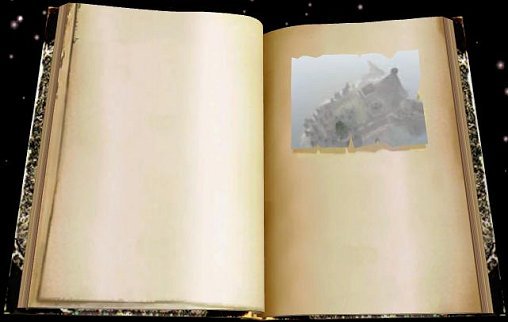The Origins of Myst
I was recently asked a wonderful question: Has any work of art ever truly changed your life?
The answer is yes.
The work of art that transformed me the most was Myst, the 1993 CD-ROM game by the brothers Robyn and Rand Miller.
Myst hit me at every level. As the first computer game I ever loved, it’s clearly what kindled my affinity for computers, specifically Macs. It was also my first conscious encounter with ambient music, and if you name a room in the game, I can probably still hum its soundtrack to you.
But it was the imaginary world inside the game that was most formative. The worlds of Myst were literally living stories, written into existence by wild-eyed world-builders in enchanted ink. They were musty, yellowed, leather-bound books sitting on shelves or tables, but they contained worlds, and when you opened them and placed your hand on the linking page, you got sucked through, and when you came to, you were there.
And oh man, the worlds they created! They were so seductively beautiful that these book wizards got a little carried away, and once there, they built ingenious mazes and traps to protect themselves out of whatever simple technology they had at their disposal. Solving these puzzles is surely what taught me my appreciation of technology, engineering, and how things work.
When I trace it all the way back to playing Myst on beige pizza box Macs in the early ’90s, my trajectory couldn’t be a straighter line. Myst got me hooked on the magical portal-opening technology of writing and books (and CD-ROMs and text files, which are close enough), and I’ll never quit. Myst is why I’ve always kept journals. Myst is why I lug 200 books with me whenever I move homes. Myst is why I read religious scriptures (holy books), insist on listening to complete long-playing albums (music books), and it’s why I make anything I make, including the website you’re on.
I recently asked Robyn Miller over email about the book thing, and it turns out books weren’t initially even that important of a detail to the Miller Brothers. It was just part of the craft of building a game. Here’s what he told me about this aspect of the game:
As for where the book idea came from, we were simply searching for an elaborate key to a puzzle. And an elaborate doorway to other worlds... something that felt new and fresh.
We talked a lot about Narnia. In one of the books, the kids "fall" into a painting of an ocean. The description was wonderful and we wanted something that felt just as magical. Paintings were obviously out. We started going through mediums that transported the player to some other place. We arrived at the idea of a book. It might work!
Our idea of linking was original much more all-immersive. We wanted the player to feel as if they were falling into the world they saw on the page. Obviously that was impossible at the time. Instead we played a silly little sound and dissolved to the new place.
And the puzzle? Whatever medium we choose had to have a key and lock ability. (SPOILER ALERT IN THIS PARAGRAPH) Or... the missing pages. You find the pages (the keys), return them, and unlock the lock (the books). Again, the books worked well for this in the case of the brothers in their prison books. (END SPOILER)
In fact, the whole game is a bunch of keys and locks, refashioned in creative ways. We were very aware of that.
There were probably other options that I don't remember. As far as 'why books?' Rand and I have always been avid readers and the world of Myst was largely inspired by works of literature. I was reading a lot of Jules Verne at the time. In fact I was just finishing up a rampage of many of his works when we started Myst that had ended with Mysterious Island. This was one of the reasons we choose an island and it was one of the reasons the basic storyline goes something like Mysterious Island: here you are, isolated on a desert island, with an invisible mad scientist of sorts, but you never really get to see him. Or at least not until the very end. So with all of this inspiration coming from books, it was very natural to choose books as the vehicle to get to other worlds.
As for what would work for writing a linking book... I have my own ideas about that. There's a belief among the Myst faithful that special inks are needed for a book to work. These inks are very rare and hard to create. Fair enough. But I maintain that the first books didn't start out as ink on paper. Those paper books were simply a facsimile of an older and more 'true' form of the art/technology. Yes, the paper books work but only because they appropriate the true technology. I maintain that the D'ni race was taught the art by someone, or something, who didn't use paper books at all.
The worlds are the real part; the books are just an abstraction. But there’s something about the structure of the abstraction that points the way to the world it describes and opens the door. I might even argue that the Myst CD-ROM itself was the first linking book that ever worked on me, except that Miller’s closing line to me was:
But could a book theoretically work in iPad form? I don't believe so.
So that kinda quashes that. But hey, he could be wrong. He’s just the author, right? That’s the thing about linking books: the worlds have lives of their own, they aren’t described completely by words. If you’ve played Myst, you know how surprising worlds can be to their creators, just like words can be to their authors.

